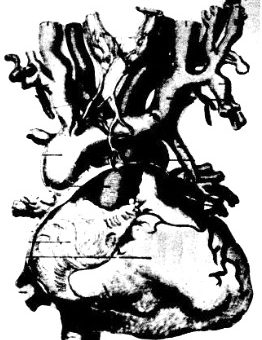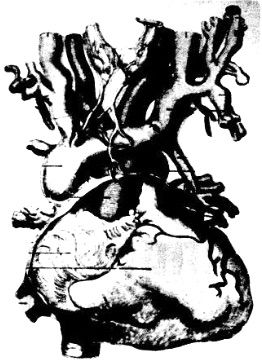
In the early 1900s, Germany was still executing the condemned with an axe and, like the French, they were also experimenting with the bodies immediately after execution.
Below is an article, published in 1905, about a medical experiment involving the heart of an executed woman.
Heart Action is Revived
The German medical world is excitedly talking of some experiments just made by Drs. Deneke and Adamw of Hamburg.
A murderess was beheaded at 8:02 a.m. Her blood to the extent of two quarts was collected and at once defibrinated.
At 8:12 her chest was cut open and weak contractions and twitching of the heart were noticeable.

At 8:15 the heart was removed from the body and passed through a weak solution of muriatic acid to clear it of all fluids and render the organ absolutely dead and nerveless.
It was then treated with what is known to physicians as the Lockesche solution and immediately well regulated movements began to be perceptible.
At 8:32 the heart was supplied with the defibrinated blood mixed with another solution and slightly heated; immediately it began quite extraordinarily powerful beats and two hours after the woman was beheaded, the heart was vibrating in lively if weak fashion.
But, little by little, its contractions became weaker and at 11:34 it was incapable of further action.
For three house, therefore, action had been kept up.
If the heart, say Deneke and Adamw, why not the brain? And if the brain can be influences after death, then speech may be produced. All is possible.
Source: The Vinita daily chieftain. (Vinita, Indian Territory [Okla.]), 14 Aug. 1905.

